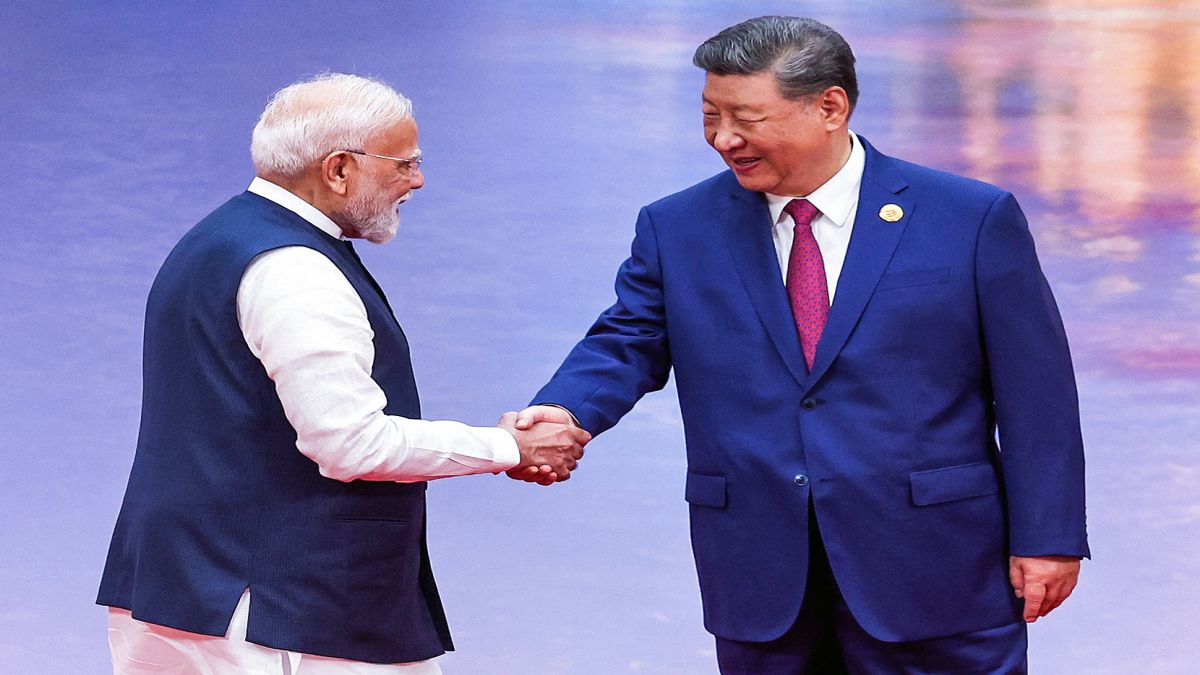The Shanghai Cooperation Organisation’s recent summit in Tianjin has produced what might be described as an unlikely diplomatic dividend. Against expectations, the meeting between Prime Minister Narendra Modi and President Xi Jinping — their first on Chinese soil in seven years — suggested that India, even if grudgingly, is willing to compartmentalise its differences with China in pursuit of broader strategic objectives.
his pragmatic recalibration comes at a moment when the SCO’s $512 billion in annual trade demonstrates that multipolarity isn’t merely theoretical — it is increasingly operational. While India and China have not papered over their core differences, their willingness to meet and cooperate can be seen as a pragmatic confidence-building exercise that, if successful, could reshape Asian geopolitics. The joint statement emphasised mutual respect and strategic communication, even as border tensions persist.
Yet the path forward remains treacherous. India must be clear-eyed about the fundamental challenge: continued escalation of border tensions without China agreeing to a mutual reduction of troops from the current deployment of approximately 70,000 soldiers on each side. This alone renders genuine rapprochement impossible. The shadow of the 2020 Galwan clash continues to loom, despite disengagement from several friction points.
The Indian government also needs to communicate to its citizens that large areas remain undemarcated, that there are differences in perception, and that many of those lines are not set in stone. This clarity is critical for the political give-and-take inevitable in any lasting solution to the border dispute.
The economics of the relationship reveal a stark asymmetry that demands urgent attention. India’s trade deficit with China has ballooned to $99.2 billion in FY 2024-25 — a figure that represents roughly 35 per cent of India’s total trade imbalance. This import dependency spans critical sectors: from moong dal (India imported 4.65 million tonnes of pulses in 2024) to Rafale jets.
This is not merely a question of bilateral trade balancing but of strategic vulnerability. A nation that imports everything from basic foodstuffs to advanced military hardware cannot truly claim strategic autonomy. This reality makes the success of India’s Make in India initiative not just an economic imperative but an existential one.
Impact Shorts
More ShortsLaunched in 2014, the programme aimed to boost manufacturing’s GDP share to 25 per cent by 2025, yet it currently hovers around 17 per cent. While indigenous defence production has surged to Rs 1.27 trillion in FY 2023-24, broader manufacturing remains constrained by infrastructure gaps, skill shortages, and regulatory hurdles.
To advance the relationship, India must identify areas for increased exports to China, backed by political will to open deeper market access. ICRIER, a leading think tank, recently estimated India’s untapped export potential at $161 billion — nearly ten times current levels.
Key sectors include telephone equipment, aircraft components, motor vehicle parts, and photo-semiconductor devices, where India could expand significantly. Agricultural products like marine exports and pharmaceuticals also show promise, provided non-tariff barriers are addressed.
China’s structural policies, however, exacerbate this imbalance. It maintains a model that prioritises exports while systematically restricting market access for importers. Tariffs on Indian agricultural goods range from 10 per cent to 65 per cent, while pharma exports face opaque rejection rates. Informal barriers — such as restrictions on rare earth materials and technical personnel — further undermine India’s manufacturing ambitions.
Beijing’s approach reflects a broader strategy of weaponising supply chains, seen recently in curbs on critical equipment. If China seeks greater access to India’s digital economy or infrastructure sectors, reciprocity must be
enforced.
Internal reforms will be crucial for India to decrease dependence on this $99.2 billion annual trade deficit. The production-linked incentive (PLI) schemes have shown promise in electronics, attracting investments from global players like Apple and Samsung, but expansion into other sectors is needed.
Perhaps the most profound challenge lies in trust — or its absence. Ancient Chinese wisdom offers a cautionary metaphor. The philosopher Xunzi, in his eponymous text from the Warring States period, observed: “The ruler is the boat, and the people are the water — water can carry the boat, but can also capsize it.”
Applied to bilateral relations, this suggests that the foundation of India-China engagement — economic interdependence and strategic cooperation — can sustain progress but can also precipitate downfall if mismanaged.
Trust, as Xunzi implied, is painstakingly built through consistent actions and transparent dialogue, yet easily lost through miscalculation. The Galwan incident exemplified this: decades of boundary protocols collapsed in moments. Post-SCO, both sides must nurture this fragile element.
The India-China relationship will help define the Asian century. Productive competition could drive regional growth, but rivalry might destabilise it. As Xunzi warned, the water that carries can also sink.
As the bigger power, Beijing must steer wisely.
The writer is a senior journalist with expertise in defence. Views expressed are personal and do not necessarily reflect those of Firstpost.
)